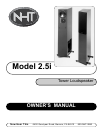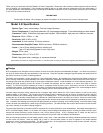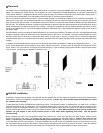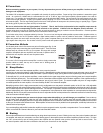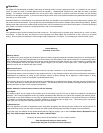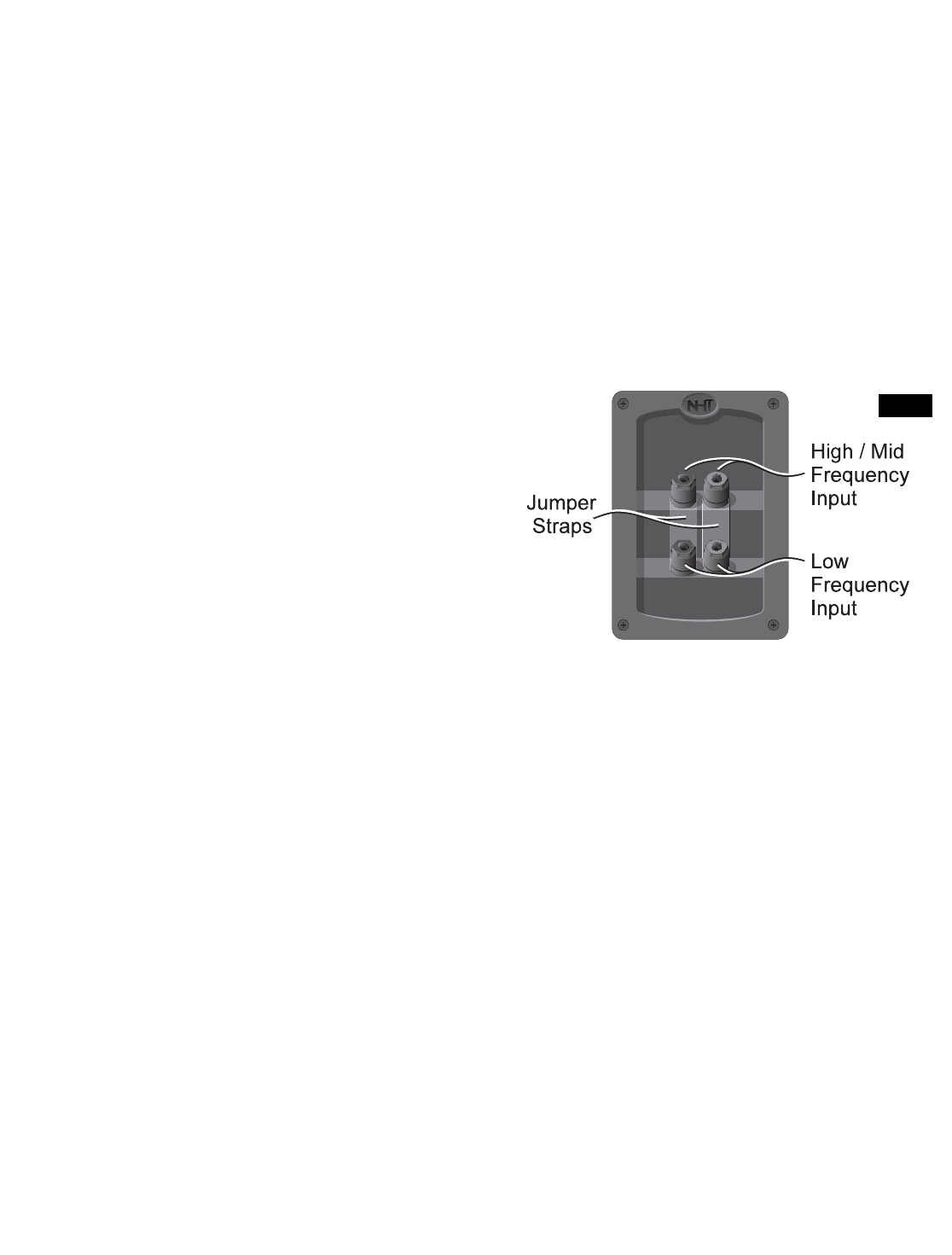
Connections
Before connecting speakers to your system, it is very important that you turn off the power to your amplifier / receiver to avoid
damage to the equipment.
The Model 2.5i loudspeaker system is compatible with virtually all quality amplifiers. Proper wiring of the speakers is essential to good
sound. At a minimum, 14AWG wire is recommended for runs of 10 feet or less, with heavier special purpose speaker wire used for
longer runs. For specialty wire considerations, consult your local authorized NHT retailer. For best results, use equal length runs of wire
for the left and right speakers. Prepare your speaker wire by stripping 1/4” to 3/8” of insulation from the ends and twisting the exposed
wire strands tightly. The five-way binding posts on the back of the speaker will accept raw wire, banana plugs, or spade plugs. Tighten
the binding posts by hand, as pliers can strip or break them.
Be sure to wire both the left and right speakers "in-phase." That is, the Positive (red) terminal on the amplifier output must be
connected to the corresponding Positive (red) terminal on the speaker. Likewise with the Negative (black) terminals. All
speaker wires have some sort of marking along one or both conductors to help you make the correct connections. Incorrect speaker
phase is indicated by weak bass and the lack of a well-defined stereo image.
To minimize noise pickup, segregate cables by function. Do not run low level signal cables parallel to power cables, speaker cables, or
digital cables. Also, do not run speaker cables or digital cables parallel to power cords or parallel to each other. If different types of
cables are placed near each other at some place in your system, separate them by the maximum practical distance and cross them at
right angles where they meet. Do not twist or tie AC power cords and speaker cables.
Connection Methods
On the back panel of the 2.5i there are two pairs of binding posts (fig. 3) with
a metal jumper strap connecting the top and bottom pairs. There are three
different ways to connect the 2.5i’s to your system: full range with a single
amplifier, biamplified with two amplifiers and two sets of speaker cable, or
biwired with one amplifier and two sets of speaker cable.
Full Range
To run the 2.5i’s full range with one amplifier / receiver, simply connect the
speaker cables to either the top set or bottom set of binding posts (it
doesn’t matter which one).
Biamplification
Biamplification is the use of two separate amplifiers, one to power the bass dri-
vers and one to power the midrange / high frequency drivers. Biamplification provides increased dynamic range and power output, as it allows
both amplifiers to concentrate all their headroom toward a specific frequency range, sparing them the task reproducing full range information.
To biamplify the 2.5i, you will need two amplifiers: a main amplifier for the upper range drivers (top pair of binding posts) and a second amplifier
for the subwoofer (bottom pair). The main amplifier can be a stand-alone stereo amplifier, dual monoblock amplifiers, or the amplifier section of
an integrated amplifier or audio/video receiver that features “pre-out” and “main-in” jacks. The second amplifier may be a full range amplifier
connected parallel to the main amplifier, or for more flexibility, the NHT SA-2 subwoofer amplifier.
Biamplifying with the SA-2 is highly recommended, as this configuration turns the passive subwoofer section of the 2.5i into a fully adjustable
powered subwoofer with onboard bass tuning functions. The SA-2 is optimized for low frequency amplification and allows the user to fine-tune
the 2.5i’s bass response for a specific listening environment. For example, it is possible to increase or decrease the volume level of the subwoofer
sections independently of the upper driver sections, to compensate for rooms that tend to under-emphasize or over-emphasize low frequencies.
Additionally, the SA-2’s low-pass crossover allows the user to adjust the rolloff of low frequencies to the subwoofer sections for further fine-tuning
of the low bass and mid-bass regions.
Note: It is very important that you remove the jumper straps when biamplifying or you will damage your amplifiers! Connect the top
pair of binding posts with speaker cable from the main amplifier, and the bottom pair of binding posts with speaker cable from the second
amplifier. If you are biamplifiying with two full range stereo amplifiers that are not identical, make sure that one has an adjustable volume control
so that you can match levels between the two. Both amplifiers will need to be wired in parallel from the preamplifier, so that they both receive an
identical line-level input signal.
If you are biamplifying with the SA-2 subwoofer amplifier, it may be connected in series, in parallel, or at speaker level. For more detailed infor-
mation, consult the SA-2 Owner’s Manual or your local authorized NHT retailer.
Biwiring
Some audio enthusiasts have found that biwiring can bring about improvements in sound. Biwiring is the use of two pairs of speaker cable and
one amplifier, with each pair connected to one set of binding posts on the amplifier (some two-channel amplifiers provide two sets). To biwire
the 2.5i’s, connect the top pair of binding posts to the amplifier with one speaker cable, and the bottom pair with a second cable. The
two sets of speaker cable are both connected to the same pair of terminals on the amplifier.
4
fig. 3



